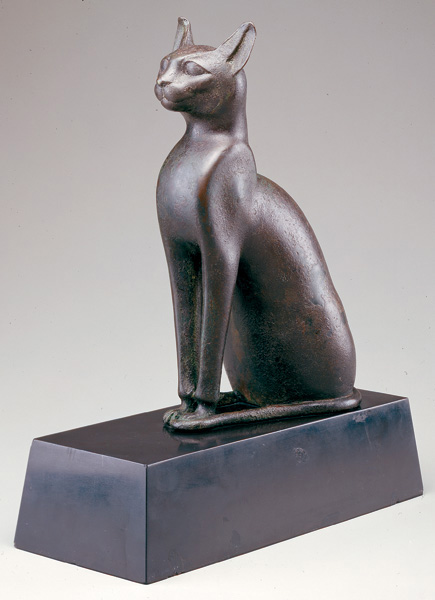
No people on earth, perhaps, has been more closely associated with a fellow creature than the ancient Egyptians with their cats.
Some 4,000 years ago the Egyptians became the first people to domesticate the cat, which they referred to onomatopoetically as miw. Soon they began mummifying their deceased feline friends and representing them in lovely painted and sculpted images—such as the 10-inch-high bronze statue dating to the 26th Dynasty (664–525 B.C.).
At least by the Ptolemaic period, the Egyptians viewed cats as manifestations of Bastet, goddess of joy and fertility and protector of women in childbirth. Bastet was sometimes represented as a serene she-cat; at other times, she had the graceful body of a woman and the head of a cat. Millions of cats were bred and raised in catteries associated with temple precincts and later sacrificed as votive offerings.
The Egyptians’ devotion to cats had a practical side, too. The fat of a tomcat was smeared over walls and floors to deter rodents, according to a 16th-century B.C. papyrus. And cats were valued for their medicinal qualities. Bandages containing a mixture of cat fat and other substances were thought to relieve stiffness and arthritic pain, and the fur of female cats was mixed with human milk and resin and used as a poultice to heal burns.
Already a library member? Log in here.
Institution user? Log in with your IP address.

